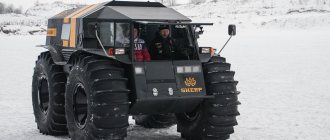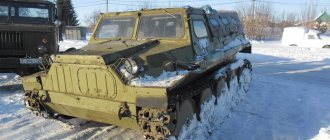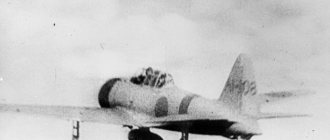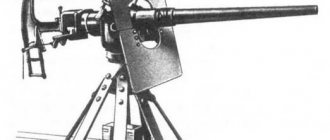GAZ-71 or GT-SM is a Soviet tracked all-terrain vehicle created on the basis of the GAZ-47 (GT-S) transporter.
The car was developed in the late 60s by GAZ designers. First, its mass production was launched at the facilities of the Gorky Automobile Plant, and then it was transferred to the Zavolzhsky Crawler Tractor Plant (ZZGT), where production of the GAZ-71 continued until 1985. The official name of this vehicle is “modernized tracked snow and swamp-going vehicle.”
The GAZ-71 all-terrain vehicle is designed for transporting people and cargo; it is capable of driving both on any type of road and in complete off-road conditions, including heavily swampy soils. This machine can overcome snow drifts, cross water obstacles up to 1.2 meters deep and even swim. In the back, the all-terrain vehicle can carry cargo weighing one ton. Simplicity, reliability and absolute “indestructibility”, coupled with excellent technical characteristics, have turned this all-terrain vehicle into a real legend in the northern territories... We can also add that the operation of the GAZ-71 continues to this day.
GAZ-71 will go over any off-road terrain, it is indispensable in the North
Since the start of mass production, several modifications of the all-terrain vehicle have been developed, as well as a number of special vehicles based on it.
The history of the creation of the GAZ-71 tracked all-terrain vehicle
The 60s of the last century became for the Soviet Union an era of active development of the Far North and the vast expanses of Siberia. The country spared no resources to accomplish these tasks. On the way to the natural resources of these regions, brave pioneers had to contend with a complete lack of roads and an extremely harsh climate. Therefore, new equipment was needed that would not be afraid of such operating conditions.
This is not to say that there were no all-terrain vehicles in the USSR. Since the mid-50s, the Gorky Automobile Plant produced the tracked GAZ-47, but by the end of the next decade it was considered obsolete. The designers began to modernize it, taking into account many years of experience in actual operation of the machine. It should be noted that the main customer of the new all-terrain vehicle was the military, and they demanded that its power plant and transmission be unified with the GAZ-66 truck.
“Gazushka” is used with pleasure by various services
In 1968, the Gorky Automobile Plant began serial production of a new all-terrain vehicle under the designation GT-SM. However, the enterprise was already overloaded with orders, so in 1973 production was moved to the Volga region, to the Crawler Tractor Plant. There it continued until 1985.
Bottom line
The GAZ-71 transporter, which today can only be purchased in used condition, is a true legend of the Soviet automobile industry. Its price remains consistently high, but finding such a vehicle is not so easy; we were unable to find any messages about the sale of such cars on thematic online sites.
Despite the fact that the production of the model was completed in the 85th year of the last century, it is still actively used in various sectors of industry and the national economy, and is especially valued in the North, in hard-to-reach areas that are not possible to reach by other means.
General description of the design of the GAZ-71 all-terrain vehicle
The body of the all-terrain vehicle is made of steel sheets of different thicknesses, connected by welding. It is completely sealed, which allows the car to float and ford water obstacles. Despite its rather impressive size, the GAZ-71 has high maneuverability and good speed.
The machine body can be divided into three sections:
- cabin;
- power compartment;
- cargo platform.
The engine is separated from the cargo platform and the cabin by special steel partitions, the panels of which can be removed. This makes access to the power plant components easier. There is also a pump installed in the engine compartment, the task of which is to pump out water while the all-terrain vehicle overcomes various water obstacles.
In the cockpit of the GAZ-71
The all-metal cabin contains two seats - for the passenger and the driver of the all-terrain vehicle. It has two side doors and two hatches that are located in the roof. The doors have special rubber seals that protect the cabin from water and dust. The battery is located behind the driver's back.
The cargo platform is covered with an awning, the frame of which is metal arches. The rear side of the platform is folding; folding seats are located on its sides. A liquid heater is used to heat the cargo compartment.
Design
GAZ-71 is a tracked transporter, a durable all-terrain vehicle capable of moving on water, which means it also has amphibious functions. It features high off-road capability, a mid-engine layout and impressive payload capacity.
The platform is made of alloy steel sheets of different thicknesses, the body is completely sealed, divided into three sections: the cabin, the cargo platform and the engine compartment. Steel bulkheads are used as boundaries between the compartments, which have special hatches that simplify the process of repairing and servicing the machine. There is a pump in the engine compartment, which is needed to pump water when entering the tank.
Taking into account the purpose, which is the transportation of not only goods, but also people, the developers equipped the body with an autonomous heating system and provided for the possibility of installing an awning. The latter, by the way, is stretched over a special frame; a sleeve is used for good ventilation.
The design features of a caterpillar tractor are determined by the scope of its use, and it is a solution to a wide range of problems:
- transportation of people and goods;
- towing trailers weighing less than 2 tons;
- tow other cars, including those stuck off-road.
The conveyor moves freely on any road and on water, was originally designed to operate at ambient temperatures from -50 to + 40 degrees, and can easily be stored without a garage.
Engine and transmission of the GAZ-71 tracked all-terrain vehicle
Initially, the GT-SM was equipped with a ZMZ-66 gasoline carburetor engine with a power of 115 hp. With. It has eight cylinders, and, in fact, is a modification of the GAZ-66 truck engine. ZMZ-66 (or GAZ-71) is equipped with a standard heater, which makes it easier to start at low temperatures.
There is a modification of the GAZ-34039 with a D-245 diesel engine (as on the Bychka). This version of the all-terrain vehicle is still produced today.
GAZ-71 has a four-speed manual transmission and a dry clutch. Its design is similar to the gearbox of a GAZ-66 car.
The GAZ-71 all-terrain vehicle is able to overcome water obstacles by swimming
History of the model
The idea of creating a car capable of moving over any terrain, overcoming even the most serious obstacles, arose in the mid-60s of the last century, when the huge “Country of the Soviets”, through titanic efforts, finally managed to recover from the Great Patriotic War.
It was planned that the machine would be used to explore hard-to-reach territories of the Far East, Siberia, etc. It was supposed to serve the development of the gas, oil and petrochemical industries. Looking a little further, we note that the GAZ-71 all-terrain vehicle coped with the task perfectly.
It is important to note that the new car, among other things, had to travel not only on land, but also on water in order to perform its functions in adverse weather conditions, such as extremely low temperatures and high levels of humidity.
As mentioned above, the predecessor of the 71 was the 47, which was produced by the company we talked about from ’54 to ’64. It has been used in various areas of human life and has been praised for its reliability and high background capacity. However, the all-terrain vehicle was morally outdated - it became clear that it needed an urgent replacement with a more modern model at that time.
The “father” of the car is considered to be the famous designer V. Rogozhin, who, taking the GAZ-47 as a basis, completely reconfigured it, moved the power plant to the center of the car, turned it in the opposite direction and placed it between the troop compartment and the cabin.
This decision made it possible to install more powerful engines and achieve ideal weight distribution. The SUV has become longer and lower, its driving characteristics have improved even when driving on water. The model was tested in different conditions: in swamps, in the desert and even on the Kola Peninsula.
During the production of the GAZ-71, its creators faced a serious problem - it turned out that the production capacity of the enterprise was not enough to meet the needs of a large country. Therefore, over time, the production line was moved to the more powerful Zavolzhsky plant, but this happened only in the 73rd year.
Useful: BTR-70: full description, photo
Modifications of the GAZ-71 tracked all-terrain vehicle
The GT-SM can be called the basic vehicle, on the basis of which new modifications and special vehicles began to be developed.
All-terrain vehicle GAZ-71 in the service of game wardens
A further development of the base model was the GAZ-3403 all-terrain vehicle. It received more capacious fuel tanks (93 liters instead of 75), new brake bands, and changes were also made to the vehicle's chassis system. GAZ-3403 was produced with several types of body awning. Based on this all-terrain vehicle, several types of special vehicles were developed. All cars created on the basis of the GAZ-3403 had a gearbox and transfer case from a GAZ-66 truck.
The most famous and widespread modification of the GT-SM was the diesel all-terrain vehicle GAZ-34039, the production of which continues to this day. It received a more powerful and economical D-245 turbocharged diesel engine and a new gearbox. Exactly the same motor is installed on the ZIL-5301 “Bychok” truck. The clutch and gearbox with five gears were taken from the GAZ-33104 Valdai truck. Thanks to such innovations, the all-terrain vehicle's carrying capacity has increased to 1.5 tons. The GaZ-34039 can be distinguished visually from the base model: its air intake has been moved to the left side.
For the army, a modification of the GT-MU was created on the basis of the GAZ-71. This is an airborne all-terrain vehicle with reduced dimensions and an armored body. The vehicle turned out to be very maneuverable, with an incredibly durable hull, but with rapid wear of the tracks and chassis due to the greatly increased mass of the armored hull. For the same reason, the specific pressure of the tracks on the ground increased to 0.24.
The armor thickness is 4-6 mm, the all-terrain vehicle received triplexes and a filter-ventilation unit. The chassis has also changed somewhat compared to the basic modification - the number of road wheels has decreased to 5 on each side. Based on the GT-MU, several special vehicles were developed for the army, including an artillery tractor, an ambulance and an all-terrain vehicle for chemical reconnaissance.
Cabin and controls
The cabin of the all-terrain vehicle is metal; It is accessible through a side-mounted hinged door or through hatches in the roof. Inside there are seats for 10 people, semi-soft reclining chairs facilitate their comfortable placement.
On board it is possible to install plumbing equipment for the evacuation of the wounded. The platform for transporting cargo is located directly in the body; the loading / unloading process is simplified due to the fact that the upper part of the tailgate is hinged.
The conveyor is controlled by a system of pedals and levers. Speeds in the gearbox and transfer case are switched by separate levers. To turn the car, you need to disengage the clutches, for this again levers are used. The on-board equipment is controlled by buttons and toggle switches, which are located on the instrument panel in the driver’s free access area.
The panel itself is a remote control with lamps and switches installed inside. It also contains a speedometer. Fans are installed on both sides of the dashboard to heat the windshield.
Since the vehicle is equipped with four fuel tanks, there is a switch on the panel that allows you to check the fuel level in each tank. Light bulbs are used to illuminate the shield at night.
Technical characteristics of the GAZ-71 all-terrain vehicle
| Model | GAZ-71 |
| Max. weight in working order, kg | 3750 |
| Length, mm | 5390 |
| Width, mm | 2582 |
| Height, mm | 1740 |
| Ground clearance, mm | 380 |
| Specific ground pressure, kg/cm2 | 0,17 |
| Load capacity, kg | 1000 |
| Max. highway speed, km/h | 50 |
| Max. afloat speed, km/h | 5-6 |
| Engine | ZMZ-66 |
| Power, l. With. | 115 |
| Capacity, persons | 10 |










